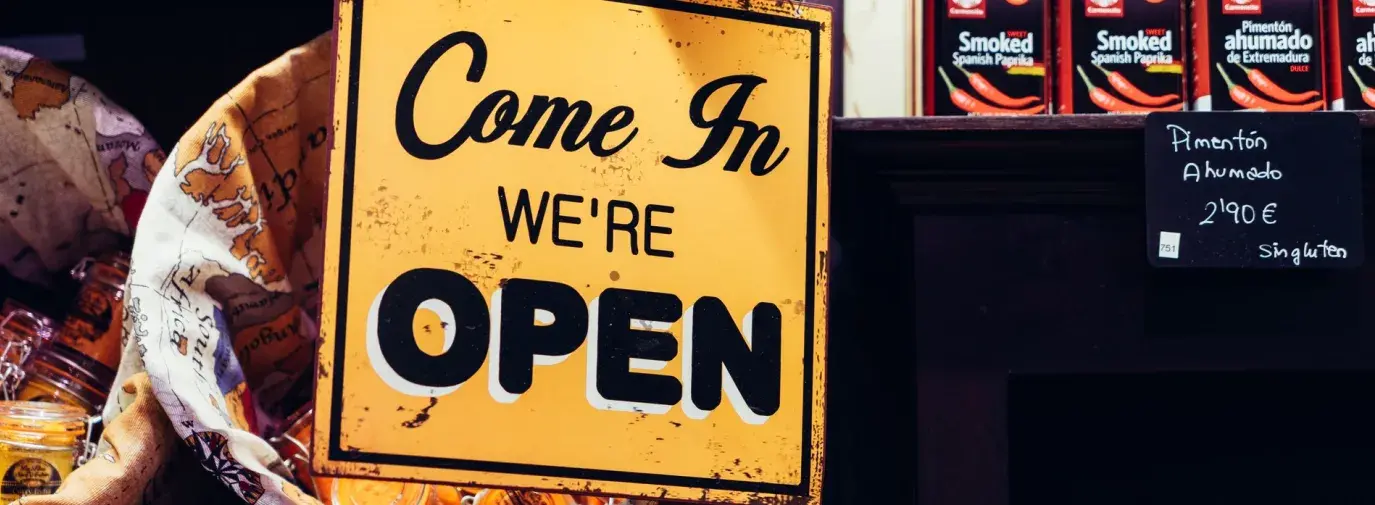
Imagine if there were a store where all the items on the shelves were free—where you could get that toaster you’ve been needing, or a desk for your child, or a business suit, all without handing over a dime. Sounds unlikely, right? Well, in Baltimore, MD, and several other locations across the country, you can indeed go shopping without forking over any of your hard-earned cash.
The concept is called a “free store,” and it provides a unique way for people to responsibly get rid of things they no longer need by putting them into the hands of others who can use them, free of charge, in a way that also builds community. Sound good?
Free stores are popping up all around the world. From a box on a street corner where people can leave items they no longer want to an open-air market to an actual brick-and-mortar store, free stores can take many forms.
Beginnings of a Free Store Movement
The free-store movement began in the United States in the 1960s in San Francisco and experienced a resurgence during the global pandemic. All share a common philosophy: that there are more than enough goods to go around; scarcity should not be an issue.
“The purpose of a free store is for everyone to rethink their shopping habits, spending habits, and general addiction to ‘newer-bigger-better,’” says Bonnie Nordvedt, administrator of the Baltimore Free Store. “Our vision statement explains this a little more: ‘We envision communities forged through relationships based on mutual aid and cooperation. We use the distribution of free items as a catalyst for change and to demonstrate what can be done when communities work together.’”
Nordvedt began volunteering with the free store in 2007, when she was only 21, and ended up running the store shortly thereafter. Originally, a handful of volunteers collected and stored donations at a warehouse and then set up markets in different neighborhoods twice a month.
In 2010, the free store opened a new, permanent location. Sixty-three people came to donate items and about 150 came to shop during that grand opening. Now, about 25 active volunteers help Nordvedt run the store, which is financed mainly through grants.
The store has been given everything from the mundane to the luxurious. In addition to clothing and household items ranging from gently used to like new, Nordvedt says, “We get some interesting artwork. We’ve gotten pieces of jewelry and pottery that are worth a lot of money.”
Nordvedt and her team of volunteers either sell the valuable items to help support the store, or raffle them off to shoppers so that everyone has a fair chance of getting the item. Everything else, from shirts and jackets to toys and furniture, is free.
Free Stores are a Service to the Community
Free store operators across the country have noted that the model works well; people don’t seem to greedily take everything they can get their hands on. Instead, they tend to walk away with a handful of items that they truly need, leaving the rest for others.
Perhaps that’s due to an overall mindfulness that free stores can be of particular help to low income families. Ben Aubin, founder and owner of the Portland Free Store, recalls how his store was able to help a woman who had recently found a room to rent after a bout of homelessness but had no furniture. She came to the store looking for an air mattress, but left empty-handed. The next day, a community member donated two air mattresses, and the store notified the woman immediately.
“She was fighting to hold back the tears,” says Aubin. “[She said] it restored her faith in humanity.”
However, Nordvedt wants people to know that free stores are for everyone, regardless of income.
“We have seen a lot of people who think the free items are just for those who can’t otherwise afford them,” she says. “While that is definitely a part of why we do this, it is not the main reason. We want to bring people together, not continue to segregate them into the ‘haves’ and the ‘have-nots.’ Every single person should be reusing, repurposing, giving, and taking.”
The Portland Free Store
Free stores don’t need fancy spaces—and some of them get quite creative. Opened in October of 2009, the free store in Portland, OR, operates out of a painted school bus in the southeast quadrant of the city.
Portland has numerous “free boxes” scattered around the city, where people donate and take items at will. Ben Aubin started the Portland Free Store in an attempt to bring the items in the free boxes into a central location and to protect them from the wet Pacific Northwest climate.
Unlike the Baltimore Free Store, Portland offers a bike delivery service. Instead of coming to shop, a customer fills out a wishlist—let’s say for a laptop—either online or at various places in the community. As soon as a match is made, the laptop will be delivered to her door via bike.
While Baltimore’s Free Store is a nonprofit, Portland’s is for-profit. Aubin says his goal is to “turn garbage into money,” creating an entrepreneurial model that helps people make a living doing something they believe in. To sustain the store, and with the goal to move into a storefront, Aubin has created a membership program he calls “Rainmakers”; individuals pay $20 a year to support the store and are then entitled to discounts at several local businesses, which helps the local economy.
The Portland Free Store makes enough of a profit to employ four part-time bike deliverers. Delivery service is free.
There are some challenges to running a free store. “It takes a lot of motivation on our end to make sure people feel like it’s okay to take free stuff,” admits Aubin, who says people are often embarrassed to ask for things or wrongly assume the items will be of poor quality.
Another variation on the free store model, which can help people get over their reservations about accepting free items, is the “swap shop,” where people have to donate an item to take an item.
The Really Really Free Market
A similar idea to a free store is a Really Really Free Market, which offer free services as well as goods. In addition to picking up a used paperback you’ve been meaning to read or a pair of hiking boots you need, you might also be able to get your hair cut, your laptop fixed, or your child’s face painted. These markets are mostly outdoors and are often one-day events.
The first Really Really Free Markets took place in Miami, FL, and Raleigh, NC, in 2004 as part of anti-globalization protests against the Free Trade Agreement of the Americas (FTAA). They were meant to be a “positive” outcome—what the groups stand for, rather than what they were against. In the years since, Really Really Free Markets have sprung up in dozens of cities across the country.
Start Your Own!
Here are some tips to start your own free store, Really Really Free Market, or swap:
- Find a location. Finding a central location where everyone will feel comfortable, such as a community center, house of worship, school yard, public park, or empty city lot. You might have to pay a permit fee to hold them in city-owned lots, but you can creatively fundraise to cover the cost.
- Attract volunteers. Colleges and universities are great recruiting grounds for volunteers. Don’t be afraid to approach religious congregations, given that many houses of worship focus on helping the poor. And reach out to any local groups that support the creation of an economy based on sharing and reuse, such as BuyNothing groups, Free Pantry organizers, and FreeCycle communities.
- Advertise in the community. Passing out flyers and hanging posters is a good start, but also visit your neighbors personally and canvass local apartment buildings. Hang banners at major intersections and in community hangouts like libraries and fitness centers. Consider printing materials in more than one language to help non-English speakers.
- Get items to “sell.” Post “wanted” notices in every local gathering place, from libraries to supermarkets to local shops. Take advantage of the changing seasons when many people are cleaning out their closets and drawers preparing to make room for their summer or winter clothes. Offer to pick up items or have one drop-off location to make it easy for people to donate their stuff. You might even accept drop-offs on the same day as the market. Make sure the goods you are “selling” are of good quality. New York’s Really Really Free Market has a group of volunteers to screen items.
- Attract attention. If your market is going to be outdoors, ask volunteers to set up activities and entertainment that may pique the interest of passersby. Music, dancing, juggling, activities for children— you’d be surprised at the talents that people in your community can showcase. You might also ask volunteers to make deliveries by bike or have someone on standby who can deliver large items in a van.
- Have a plan for leftover items. Talk to your local Goodwill or charity shop in advance to see if it would like leftover donations. Or, volunteers may be willing to store items for the next market.
Give It Away, Give It Away Now
Even if it’s just a one-time event, a free store or swap can bring community members together in a unique way, while giving unwanted items a second life. Consider holding your own—the rewards may surprise you.
Updated February 2023







